I love this time of the year in Hawke’s Bay, although it’s been a little bit different than usual weatherwise. I don’t know if these are natural portents of times to come or results of things we’ve done in the past. Still, the kowhai has moved from splendid rich yellow bloom and has transmorphed into long slender pistils, tendrils of potential.
My Maori spuds are doing really well. Way back during Mataariki I saw them starting to spout, so I put them directly into a rich patch I’d been composting. It is the earliest I’ve ever planted out, and a wet, generally mild, winter has presented me with a verdant crop, looking like it’s already keen to flower. I heard that, way back, on the north-facing Otatara gardens, the local Maori grew three crops a year. I’ll be satisfied with two. For me the trick is to grow on the shoulder seasons because the main season is really demanding on weeding and irrigation, and, anyway, you can buy fresh produce from the commercial growers for diddly. In any case I’ve got three varieties of Maori spuds in at the moment: moemoe; tutaekuri (of course); and, peruperu.

Maori Potatoes
My only apprehension at the moment is a late frost, and I’ve got my frost cloth all ready to go if required. I seem to have inherited my old man’s green fingers, although an ability to grow spuds may just be an Irish thing, like the instinct to pick a fight, an inherent genetic capacity shared by every left-footer.
Having saluted the earth I had better give my valedictions to those who have passed. There are many, amongst them close friends and whanau. In September we buried George Hori Tareha, Taape’s older brother. Hori was a lovely bloke, a warrior in his day, with the Royal NZ Corps of Transport, and of late, a doting granddad and recreational golfer. His health had not been good for some time. Hell, it now seems many years ago that he had an initial stroke; as their name intimates these ailments strike with the regularity of clocks. He’d recover, seemingly well enough, but irreversible damage was being done and that narrowed his treatment options just as it had his vital conduits. So, he’d been confronting his mortality on an increasingly frequent basis and, eventually, arrived at that same terminus that awaits us all, where we will disembark the mortal omnibus of family and friends. On hearing the news Taape and Tipu shot down to Shannon to see their brother before he was cold, and then returned to Waiohiki to get the arrangements happening for the tangi.

With no marae facilities currently at Waiohiki we gathered at Timi Kara at Moteo Pa. The whanau came from far and wide, although Bunny, now the eldest of the whanau, was cast up in Sydney with a crook hip. Still, every line was represented, the intergenerational weave of Tareha whakapapa remaining intact and vital – as the family whakatauaki states “Kua mate Tareha, kei te uri, ki te ora”. On the last evening before burial, the powhakamutunga, Hori’s teenage granddaughter Manaia and her cousins sat at the entrance of whare mate, the boys strumming their guitars and Manaia singing, sometimes accapela sometimes accompanied, if the boys knew the tune. It was just fantastic. As the whakatauaki implies this fresh young generation is full of potential.
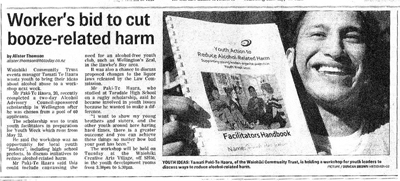
In early August I went over to Fielding with Tamati Paki to meet up with Te Miringa Hohaia and Pikikore. Tamati is running an ALAC funded programme to enroll youth leaders in alcohol free youth events. For us the mission objective was to secure Te Miringa as a tutor in an events management programme Tamati was organising. We had Ole Maiava and Hugh Lynn on board for the course and Te Miringa would absolutely cap off an incredible body of knowledge about event management in 21st century Aotearoa. When Tamati explained his kaupapa – building the capability of youth leaders to run youth defined, youth led, alcohol free events – both Pikikore and Te Miringa were keen to contribute. We chatted about a lot of things; the viability of the Peace Festival itself was one issue. My view was that most of the people who attend are there for the overarching kaupapa, the music is necessary for sure but the line up could be less extensive and less expensive. We talked about two other things in particular: the gathering of Maori gangs and gang members at Parihaka in a quest for whanau ora, and, holding a Keskidee reunion, maybe as part of a reconstituted Parihaka International Peace Festival. On the way back from Fielding I talked to Tamati about Te Miringa, his learning, his staunchness, and his creative and revolutionary spirit. I always imagined him being a wise old man in the Taranaki tradition (on reflection I reckon he’d spent the last decade training for it). I said to Tamati “bro, when I snuff it you can always trust that fulla for wise advice”. I certainly have no powers of matakite. A few days later Te Miringa was gone.
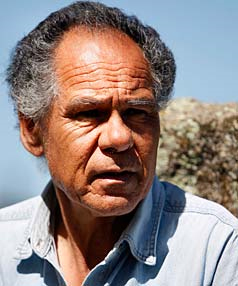
Te Miringa Hohaia – image from NZPA
I got over to Parihaka on the Thursday. Te Paepape o te Raukura was packed and the wait was long. The brother was laid on his funeral bier which was elegantly constructed from manuka and muka. His pall was a harakeke mat. He was bronzed and elegant in death. His ladies, Kath and Pikikore attended him, his children and mokos around him. The whanau from Ngati Haunui a Paparangi at Jerusalem arrived to see ‘Milton’ off. John Baxter arrived accompanied by Colin Durning. I wore my patch to complement the colours of the ‘Double Rainbow’. After the tikanga of the powhiri was completed Ruakere Hond asked me if I wanted to speak. Is the Pope a Catholic? I read a bit of Jimmy, a verse recounting the Jerusalem community in which ‘Milton’ carves Hemi a crucifix. I told the apocryphal story of how Fr Te Awhitu had been petitioned by the older women of the Pa about the ‘unmarried’ Kath and Milton ‘living as man and wife’ in a whare they had repaired. The wise old man said he’d address the issue in his sermon of the coming Sunday.
Duly, the padre spoke. His sermon went something like this, spoken in his heavily accented and sometimes faltering English:
“I been driving down the river road to Wanganui. It is a very bad road, many turns many twists. It is dangerous. Many cars, many drivers. Some driver have license, some not have license. Some driver with license not very good driver. Some without license very good driver. Amen. “
I spoke too of my last meeting with the brother Te Miringa and of our discussion about holding at Parihaka a hui of the Maori gangs to promote the growing quest for whanau ora. I asked, “Who will be our pou? Who do I come to now?” In time I will seek a reply. I’d intended to come back for what was anticipated to be Te Miringa’s burial on the Saturday, but there were coded messages, “you have done your bit, we have our own plans in accordance with his wishes”. And so, early in the morning of his final day a band, “ninja-like” I have heard it described, lifted him from his beloved Paepae, and, in the ancient traditions carried him silently and secretly away. It is said that, like the spiritual being he was, he ascended into the sky and to the maunga that had served as the anchor point for his mortal works. There, where land meets sky was to be his reringa wairua, and he was released to join his ancestors. Now we, his whanau and friends, henceforth will experience him only in his new spirit form to stand beside us when we carry through on the actions for which he stood in life. Later on the Saturday people came from afar to say farewell, but he was already gone. In death he was tuturu just as he was in life, polarising and contentious. My heart cries but there is a smile on my lips. Haere atu ra e taku tuakana Te Miringa,haere, haere, haere.
And whilst I am on this plane, this ‘taha’ of nga tini mate I pay respects to my Black Power brother from Waitahanui, Tuwharetoa, Peter “Nana boy” Moke, who the whanau of the fist gathered to farewell in August. His lifestyle had led to him developing diabetes, an illness too common amongst the bros. A good representation of us had attended his 50th earlier in the year knowing at that time it was likely to be the last time we marked such an event with him. At Easter he came to the 35th of the Hawke’s Bay Blacks, and whilst he was hanging in it was clear that these were the last of his days. His bros like Skip and his whanau were close by when he passed, and their love softened his passage into the night. The kaumatua were welcoming of us all, patched or not, their mana arising from a deep wellspring that was neither compromised nor distracted by what we chose to wear. As we gathered by lake Taupo at the whanau urupa a carload of Mongrel Mob hierarchy pulled up. Their act of respect was to bring with them a patch to be returned. As I watched the older members of the Black Power, rangatira, cross the road to hongi with these chiefs from an opposing ‘tribe’ I mused that this may well have been an exchange representative of a way things were day in days of yore. It confirmed for me once again that essentially these gang members are Maori, and that is their enduring and defining characteristic as human beings.
And, now, finally, let me farewell the sister Mereta Mita. I’d looked forward so much to meeting up with her again when we held our Keskidee reunion. Like a hundred others I had unfinished business with her, in my case the movie on the death of Dominic Kaiwhata. When she didn’t want to deal with something Mereta would just stonewall. I will remember her forever young. She’s like my lady Taape, these Maori women who don’t seem to age as rapidly as the rest of us, and who keep a serene youthfulness about them in some way or other. It is both Mereta and Martin Sanderson that we have laid to rest from our team of restless activists, and I now wish her, as I have wished him, eternal peace on a mattress of work well done.
Here’s a few random thoughts and comments about things that have gone on since I wrote to you last: What did you think of that hypocritical prick David Garrett, who having championed the execrable three strikes legislation, turned out to be a whited sepulchre in his own behaviours? In Garrett’s defence Rodney Hide reminded us that Parliament was a “House of Representatives” not a “house of saints”. I can live with that. Describing oneself as a gang member is a ready concession to one’s human failings. Why all the criminal justice moral panic then?
I went up to the after match for Sir Peter Leitch’s elevation as a Knight of the Realm. It was great fun being with his whanau and friends. Damn I love the bloke. He’s a Pakeha hero in my books. I reckon I was the first to come up with the “Sir Loin” joke, and to hear it being claimed by the PM during Pete’s “This is Your Life” programme just about had been going to the lawyers.
Richard Brimmer took Taape and me over to listen to Nathan Haines & the Dream Band in concert at the Assembly Hall in Hastings. I love Haines’ recorded works. “Popps’” (Martin Popplewell) does the artwork for his album covers, as he does now for bottles, and crockery, and… – hell he’s getting like Frizzell – what is it about Hawke’s Bay artists and their propensity to use everyday items as canvasses?
The youngsters here at the Waiohiki Arts Village have been having a ball lately. The trustees decided to steer away from the ‘rescue mission’ mode we had started to drift into, trying to repair kids who were in trouble. Instead a programme has been developed that aims for an approach based on realising ‘potential”. It has been named “Toi Rangatahi Waiohiki”, Toi referring to the arts, rangatahi to the intended audience, and Waiohiki to the location. It is presented as an interwoven programme of personal youth development opportunities delivered through the medium of the arts and cosmology. The underpinning philosophy of ‘Toi Rangatahi Waiohiki’ is one of puawaitanga, that young people are full of potential, and that the challenge is to help them identify and realise that potential so they can blossom and become all that they can be. It’s a holistic idea, and embraces these principles:
Whanaungatanga (Belonging) – We all have whakakpapa and part of our journey of discovery is to know who we are ancestrally. We also have relationships with everyone we know, one way or another. To bring us to fruition these must be relationships of respect.
Tohungatanga (Mastery) – At one level this refers to our becoming competent in an aspect of an art, craft, or function. It also includes having mastery over one’s self, emotions and behaviours. It is the platform for enlivening a sense of achievement.
Mana Motuhake (Independence) – This refers first to inner discipline and respect for self, respect for others, and respect for place and people. It moves along the continuum from dependence to interdependence and finally independence, self actualisation.
Atawhai (Generosity) – This is based on a sense of self worth and leads to the ability to ‘give away’ self, things, and time. It embraces of the notion of ‘aroha ki te tangata’ – love for people.
Mandy Olson and Hooley Thin have been running pottery classes. The young people tend to be kinesthetic and quickly become absorbed in converting clay into objects. Some show real talent and flair. Heather Turner teaches felting and sewing. The girls whipped up glam shoulder bags which they proudly carry the kitchen sink around in. A number of people have donated sewing machines so Helen Lloyd helps by giving the younger ones advice on this and that, as they turn patterns into finished works of wearable art. Helen is also the ‘economy kitchen’ cooking instructor. An increasing number of other adults including a woodturner are offering to provide input and I can see a time where we have a number of retired and semi-retired individuals contributing their knowledge and sharing their skills with young people beginning to chart their way through life. One great initiative was a session called ‘Pimp My Suit” with Ron Te Kawa from Gisborne.
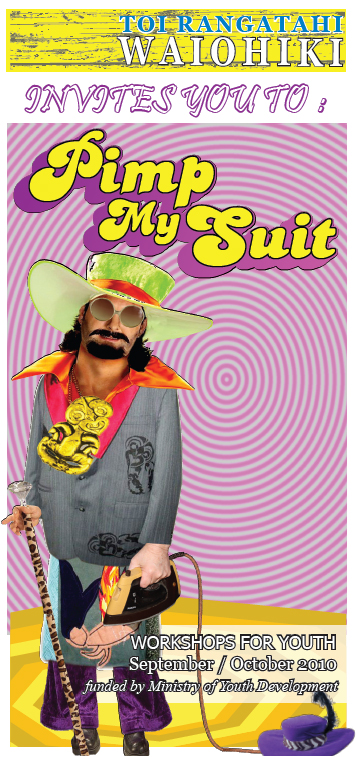
Ron ran a workshop over two days. The youth used second hand clothing from the Sallies, recut the material, and used screen printing to pimp it up. It was fantastic. Another significant initiative has been the event management workshops for youth leaders. I expect to see this effort come to fruition with a series of alcohol and other drug free youth-led events at Otatara over the summer.
Last weekend (Labour weekend) I went down to Wellington to help with the 40th Anniversary of the Wellington Black Power, and, in fact the Black Power in NZ. You read in Wikipedia and such that the Blacks were founded in Whakatane. Even otherwise reputable historians start citing this, and then it gets into academic texts and is treated as a referenced fact. Bullshit! Tell me who founded it in Whakatane? No one can because it’s a myth. The Black Power in Aotearoa was founded by Reitu Harris in Wellington in 1970. Fullstop.

So, we gathered to honour the past, to enjoy the present and to aspire for the future. It was just a little gig on the general scale of such things but leaders came from the far South and North, from the East and West. Our grand old mentor Bill Maung Maung came. He is frail and a stroke has incapacitated him. Still his eyes are alive and dancing, enquiring, conveying messages, asking questions, holding us to account by his very presence. The inclusiveness of Maori ritual is uplifting and my emotions surface when during the hariru a hundred or so young warriors line up to hongi the old man and grasp his offered hand. Although Bill now no longer has the power of speech I was privileged to repeat the mantras that he used to share with us including “The ballot not the bullet”. That was my key message for the hui; if you don’t like the laws of the day and the social construct then get off your democratic arses, register, and vote. Mobilise politically. That’s the refrain!
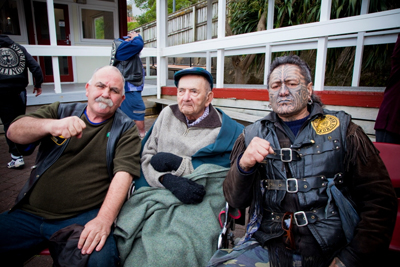
D, Bill Maung and Whenu ‘Sarge’ McKinnon
We held the ‘do’ at a bar on Lambton Quay. It was handy as the centenary rugby league test between the Kiwis and Great Britain was being played at the Stadium and a large number of our whanau wanted to see the match live. In any case its an otherwise pretty quiet side of town at that time of the week. Eugene had held talks with the Police – they’d heard exaggerated reports of the numbers likely to attend – and explained the nature of our gathering. Besides the white power were holding a National Front flag raising ceremony at Parliament at the same time and “ooh, er”. On the basis that its easier to ask for forgiveness than permission I got the boys to build a pallisaded fence along a rail between footpath and roadway.
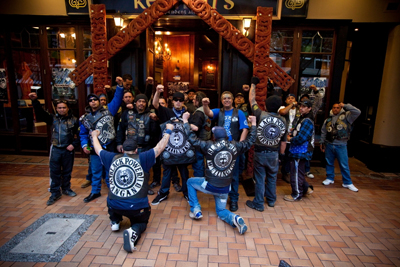
We brought out the carvings stored since ‘K St’ burned down and erected the pou at either end of the pallisading and the carved entranceway over the front door. We capped it off by screwing a large fist onto the railing on the venue’s second storey The nett effect was a tad ‘in your face’ in some ways. Gang insignia and patches are not favoured in most city centres, but, somehow, Wellington has a tradition of accommodating the atypical. It does pose the question as to what constitutes a valid expression of self, and tests the right to assembly, publicly, for a pre-arranged lawful purpose. It created an interesting juxtaposition when the white power marched along Lambton Quay from Parliament. They were accompanied by policemen. A group of us were working on preparing the venue and they had to walk through us. We just stood with our backs to them, white power eyes taking in Black Power patches, and they passed without a word.
The boys started drifting down to the venue after they’d satisfied their hunger at the post-Powhiri hakari. We had a series of bands play, one called ‘The Three Amigos’ and another, a ten piece ‘big band’ called Tautoko led by Richard Te Tau. I’d supported Richard and his team from Atua Kingi ministries in trying to raise funds – unsuccessfully I’m afraid – to undertake a tour of the prisons (The Tour of Hope). The project involved Michael Jones and Eroni Clarke and a bunch of great musicians. In a way Richard was continuing his ministry by playing for us. Well this was one instance in which the devil certainly didn’t have the best tunes. Tautoko were just fantastic and were perfect for the evening. We started at 4.00pm, broke for the league then kicked off after 9.00pm.
After Tautoko finished at midnight the Darkside/Welly Deep boys took over with their hippy hoppy and rap. Something for all tastes. It was a great event and despite the ever present potential for trouble, especially where alcohol is involved and gang members and the public are meeting, none occurred. It’s a long time since I’ve done a stint on the door. It’s really a young bucks’ game. For me the day had started at 7.00am so by the time we had everything done and dusted I’d worked something like 22 hard long hours. Nevertheless I’d like to think my presence and role helped peace prevail.
And may that peaceful state of affairs prevail in Te Wairoa. I know we’re unlikely to have telly adverts saying “Gunfights are not OK” but hell, you wouldn’t think that you’d have to spell it out would you? I don’t want to go into all the ins and outs of what has happened up there, but there are no rights, only wrongs. If you want to physically compete with others then put a league jersey on (or such) and play the game, if you want to get into a fight then put your dukes up in a boxing ring or cage fight, if you want to take up arms and shoot people then join the army.
I think the area commander of Police in Gisborne Sam Aberahama got it right when he said that the gang situation in Wairoa is a complex and intergenerational issue. Similarly the Mayor Les Probert and other town leaders seem to have a grip on the reality of the situation. Included amongst the town leaders are gang leaders themselves. I know that a group of pro-social leaders from both sides of the divide have met and have agreed to do their best to calm things down and keep it that way. It again raises the debate about patches and all that, but as Les Probert concedes you hardly see a patch in Wairoa, so, again, it comes down to behaviours.

Just as in Whanganui, the guys who use guns don’t seem to recognise the harm to the whanau of both victim and perpetrator alike, and, as Mr Aberahama intimated, this can set up intergenerational issues. In that case we better start searching for family solutions. Its timely then that I’ve been in communication with John Wareham currently in New York. John ran the original event with the Mob, Blacks and Sensible Sentencing Trust that has led to so much progress in this difficult and complex area. John’s arranging to come back out to Aotearoa early in the New Year. He’s figuring on how we might put on an event for gang related fathers and sons, titled, for the meantime “Fatherhood, gangs, & choices”. And, with that tantalising proposition in the air, I’ll sign off and out.
Arohanui. Denis







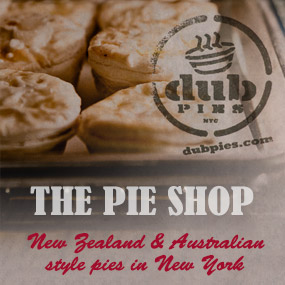













Hi Lucille, I would love to make contact with you to discuss whanaungatanga, I am a great grand daughter of Minarapa Metio who married second wife Mereana Hataraka Tuhoe, they lived in Matata. HIs first wife was Nohotihi Minarapa. My grandmother his daughter is Jean Mereana Metio deceased in 1968 and buried in Matata. My aunts had alot to do with Riparata Teresa Minarapa Mitai Ngatai their aunt a half sister to their mother Jean Mereana Metio. Best regards Grace Barnes (Wilkinson)
Interesting